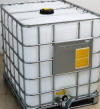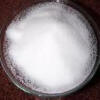Search for the supplies that you need here:
DMF Support and Documentations Available | |
 WHO-GMP Certified Good Manufacturing Practice Certified by World Health Organization |  WC, Written Confirmation for Active Substance to be imported into European Union (EU). |
Sodium Propionate Manufacturers Exporters USP BP Ph Eur IP EP FCC Food Grade
Anmol Chemicals is a manufacturer supplier exporter of Sodium Propionate and it offers materials as per IP BP EP Ph Eur USP NF JP FCC Food Grade as per the the latest monograph at best prices. Anmol Chemicals Group, established in 1976, is the pioneer manufacturer of Specialty Chemicals, Pharmaceutical Excipients, Some API, Food Chemicals in India. Anmol Chemicals Group has manufacturing facilities spread across Western India, representatives in Houston, Chicago USA and Dubai, UAE. We also have toll manufacturing units for processing chemicals in a few countries around the world. We make IP, BP, EP, USP, NF, Ph. Eur., JP, FCC or Food Grade, Analytical Reagent Grade, LR or Laboratory Reagent Grades and Pure Grades of various chemicals. All our items are analyzed to meet the required standards. We can supply the product in grams for your laboratory trial and in tons for your plant scale jobs.
We manufacture Bulk Drugs / API, Excipients, Pharmaceuticals (IP BP USP NF Ph Eur EP JP), Specialty Chemicals (Pure/Reagent), Mineral Fortifiers (FCC). Our manufacturing facility is FDA approved and GLP, cGMP, ISO9001, ISO14001, ISO/IEC 17025, ISO22000, FSSC 22000, ISO45001, FSSAI, Kosher, HALAL, COPP, WHO-GMP certified and Written Confirmation (WC) is available. Solid materials can be customized for particle size, shape, and bulk density. We observe WHO Good Manufacturing Practices and Good Laboratory Practices. We are a government-recognized STAR Export House and "Authorised Economic Operator (AEO)" per Indian Customs.
All technical documents and DMF support available.
CAS No.: Anhydrous 137-40-6 & Hydrate 6700-17-0, Molecular Weight: 96.1, Chemical Formula: C3H5NaO2
Sodium Propionate SDS of Manufacturers
We offer Sodium Propionate Commercial Pure and Pharmacopoeia Grades
Sodium Propionate Commercial Food Grade & Pure
Sodium Propionate
CH3CH2COONa
C3H5NaO2 Formula weight 96.06
INS: 281 CAS 137-40-6
DESCRIPTION
Sodium Propionate occurs as white or colorless, transparent crystals or as a granular, crystalline powder. It is hygroscopic in moist air. One gram is soluble in about 1 mL of water at 25°, in about 0.65 mL of boiling water, and in about 24 mL of alcohol. The pH of a 1:10 aqueous solution is between 8.0 and 10.5.
Function: Preservative; mold inhibitor.
REQUIREMENTS
Identification:
A. A 1:20 aqueous solution gives positive tests for Sodium.
B. Upon ignition, a sample yields an alkaline residue that effervesces with acids.
C. Warm a small sample with sulfuric acid. Propionic acid, recognized by its odor, evolves.
Assay: Not less than 99.0% and not more than 100.5% of C3H5NaO2 after drying.
Alkalinity (as Na2CO3): Passes test (about 0.15%).
Iron: Not more than 0.003%.
Lead: Not more than 2 mg/kg.
Water: Not more than 1%.
Sodium Propionate BP Ph Eur Grade Specifications
C3H5NaO2
96.1 -- CAS 137-40-6
Action and use
Antifungal
DEFINITION
Sodium propionate
Content
99.0 per cent to 101.0 per cent Sodium propionate (dried substance).
CHARACTERS
Appearance
Colourless crystals or, white or almost white powder, slightly hygroscopic.
Solubility
Freely soluble in water, sparingly soluble in alcohol, practically insoluble in methylene chloride.
IDENTIFICATION
First identification A, D.
Second identification B, C, D.
A. Infrared absorption spectrophotometry.
Comparison reference spectrum of sodium propionate.
B. Dissolve 0.1 g in a mixture of 2 ml of copper sulphate solution and 2 ml of methylene chloride. Shake vigorously and allow to stand. Both the upper and the lower layer show a blue colour.
C. To 5 ml of solution S add 2 ml of 0.1 M silver nitrate. A white precipitate is formed.
D. Solution S gives reaction of sodium.
TESTS
Solution S
Dissolve 10 g Sodium propionate in carbon dioxide-free water prepared from distilled water and dilute to 100 ml with the same solvent.
Appearance of solution
Solution S is clear and colourless.
pH
7.8 to 9.2
Dilute 1 ml of solution S to 5 ml with water.
Related substances
Liquid chromatography.
Test solution: Dissolve 0.250 g of the substance to be examined in water and dilute to 100 ml with the same solvent.
Reference solution (a) Dissolve 10 mg of the substance to be examined and 10 mg of sodium acetate in water and dilute to 100 ml with the same solvent.
Reference solution (b) Dilute 1.0 ml of the test solution to 100 ml with water.
Column: ı
ı— size: l= 0.25 m, Ø = 4.6 mm;
ı— stationary phase: octadecylsilyl silica gel for chromatography (5μm).
Mobile phase Dilute 1 ml of phosphoric acid R to 1000 ml with water.
Flow rateı1 ml/min.
Detection Spectrophotometer at 210 nm.
Injectionı 20 μl.
System suitability Reference solution (a):
ı— resolution: minimum 5 between the peaks due to sodium acetate and sodium propionate.
Limits:
ı— any impurity: not more than 0.1 times the area of the principal peak in the chromatogram obtained with reference solution (b) (0.1 per cent);
ı— total: not more than half the area of the principal peak in the chromatogram obtained with reference solution (b) (0.5 per cent);
ı— disregard limit: 0.05 times the area of the principal peak in the chromatogram obtained with reference solution (b) (0.05 per cent).
Readily oxidizable substances
In a ground-glass-stoppered conical flask introduce 10 g of the substance ( Sodium propionate.) to be examined.
Add 100 ml of water R and stir to dissolve. Add 25 ml of sodium hypobromite solution and 10 ml of a 200 g/l solution of sodium acetate, stopper the flask and allow to stand for 15 min. Add 10 ml of potassium iodide solution and 20 ml of hydrochloric acid while cooling.
Titrate with 0.2 M sodium thiosulphate, adding 2 ml of starch solution R towards the end of the titration. Carry out a blank titration. The difference between the volumes used in the 2 titrations is not greater than 2.2 ml.
Iron
Maximum 10 ppm.
10 ml of solution S complies with the limit test for iron.
Heavy metals
Maximum 10 ppm.
12 ml of solution S complies with limit test A. Prepare the standard using lead standard solution (1 ppm Pb).
Loss on drying
Maximum 0.5 per cent, determined on 1.000 g by heating in an oven at 105C for 3 h.
ASSAY
Dissolve 80.0 mg Sodium propionate in 30 ml of anhydrous acetic acid R. Titrate with 0.1 M perchloric acid, determining the end-point potentiometrically.
1 ml of 0.1 M perchloric acid is equivalent to 9.61 mg of C3H5NaO2.
Sodium Propionate FCC Food Grade Specifications
Sodium Propionate
CH3CH2COONa
C3H5NaO2 Formula weight 96.06
INS: 281 CAS 137-40-6
DESCRIPTION
Sodium Propionate occurs as white or colorless, transparent crystals or as a granular, crystalline powder. It is hygroscopic in moist air. One gram is soluble in about 1 mL of water at 25°, in about 0.65 mL of boiling water, and in about 24 mL of alcohol. The pH of a 1:10 aqueous solution is between 8.0 and 10.5.
Function: Preservative; mold inhibitor.
REQUIREMENTS
Identification:
A. A 1:20 aqueous solution gives positive tests for Sodium.
B. Upon ignition, a sample yields an alkaline residue that effervesces with acids.
C. Warm a small sample with sulfuric acid. Propionic acid, recognized by its odor, evolves.
Assay: Not less than 99.0% and not more than 100.5% of C3H5NaO2 after drying.
Alkalinity (as Na2CO3): Passes test (about 0.15%).
Iron: Not more than 0.003%.
Lead: Not more than 2 mg/kg.
Water: Not more than 1%.
Sodium Propionate USP NF Grade Specifications
Sodium Propionate
C3H5NaO2·xH2O
Propanoic acid, sodium salt, hydrate.
Sodium propionate hydrate CAS 6700-17-0
Anhydrous 96.06 CAS 137-40-6
Sodium Propionate, dried at 105 for 2 hours, contains not less than 99.0 percent and not more than 100.5 percent of C3H5NaO2.
Identification—
A: Infrared Absorption 197K , on un-dried specimen.
B: A solution (1 in 20) responds to the tests for Sodium.
Alkalinity— Dissolve 2.0 g in 20 mL of water, and add phenolphthalein TS: if a pink color is produced, it is discharged by 0.60 mL of 0.10 N sulfuric acid.
Water: not more than 1.0%.
Heavy metals— Dissolve 2 g in 1 mL of 1 N acetic acid and sufficient water to make 25 mL: the limit is 0.001%.
Organic volatile impurities: meets the requirements.
(Official until July 1, 2007)
Assay— Dissolve about 200 mg of Sodium Propionate, previously dried at 105 for 2 hours and accurately weighed, in 50 mL of glacial acetic acid. Add 1 drop of crystal violet, and titrate with 0.1 N perchloric acid VS to a green endpoint. Perform a blank determination, and make any necessary correction. Each mL of 0.1 N perchloric acid is equivalent to 9.606 mg of C3H5NaO2.
We also manufacture Sodium Propionate EP Grade.
Keywords: Sodium Propionate IP BP Ph Eur EP USP Analytical Reagent FCC Food Grade CAS Number Anhydrous 137-40-6 Hydrate 6700-17-0 Manufacturer Supplier Exporter Monograph Uses Chemical Molecular Formula Weight.



Manufacturer Supplier Exporter
ANMOL CHEMICALS Private Limited
Representatives in Houston, Chicago and New York, USA
TEL: (OFF) +91 22 23726950, +91 22 23774610, +91 22 23723564
Taloja Navi Mumbai, Banglore, INDIA
e-mail: info@anmol.org
Copyright and Usual Disclaimer is Applicable
Last updated 23-oct-25
Exporters to USA, Canada, UAE, Kuwait, Qatar, Gautemala, Tunisia, Europe, South Africa, Bangladesh, Sri Lanka, Tanzania, Kenya, Egypt, Iraq, Turkey, Israel, Vietnam, Nigeria, Uganda, Brazil, Chile, Argentina, Dubai, UAE, Saudi Arabia, Cameroon, Mexico, Brazil, Chile, Argentina, Korea, Thailand, Malaysia, Indonesia, Jakarta, Australia, China, Germany, France, etc.
Representatives in New York, Houston - Texas, Chicago - Illinois, Los Angeles.
All products are Sold for Industrial and Laboratory Use only.
Fast Selling IP BP Ph Eur EP USP NF JP Analytical Reagent FCC Food Grades of Chemicals by Anmol Chemicals
Ammonium Persulfate --- Acetic Acid Glacial --- Aluminum Chloride --- Ammonium bicarbonate --- Benzyl Alcohol --- Butylated Hydroxyanisole --- Butylated Hydroxytoluene --- Boric Acid --- Calcium Butyrate --- Calcium Chloride --- Calcium Hydroxide --- Calcium Lactobionate --- Calcium Saccharate --- Carbamide Peroxide --- Calcium Oxide --- Calcium Sulfate --- Chromic Chloride --- Fumaric Acid --- Magnesium Butyrate --- Magnesium Chloride --- Magnesium Sulfate --- Malic Acid --- Maleic Acid --- Manganese Chloride --- Manganese Sulfate --- Octyldodecanol --- Oleic acid --- Phenylethyl Alcohol --- Propylene Carbonate --- Potassium Hydroxide Pellets --- Potassium Alum --- Selenious Acid --- Sodium Acetate --- Sodium Bromate --- Sodium Selenite --- Sodium Perborate --- Sodium Hydroxide --- Sodium Sulphate --- Sodium Sulfide --- Sodium Thiosulfate --- Urea --- Zinc Chloride --- Zinc Sulphate ---



















